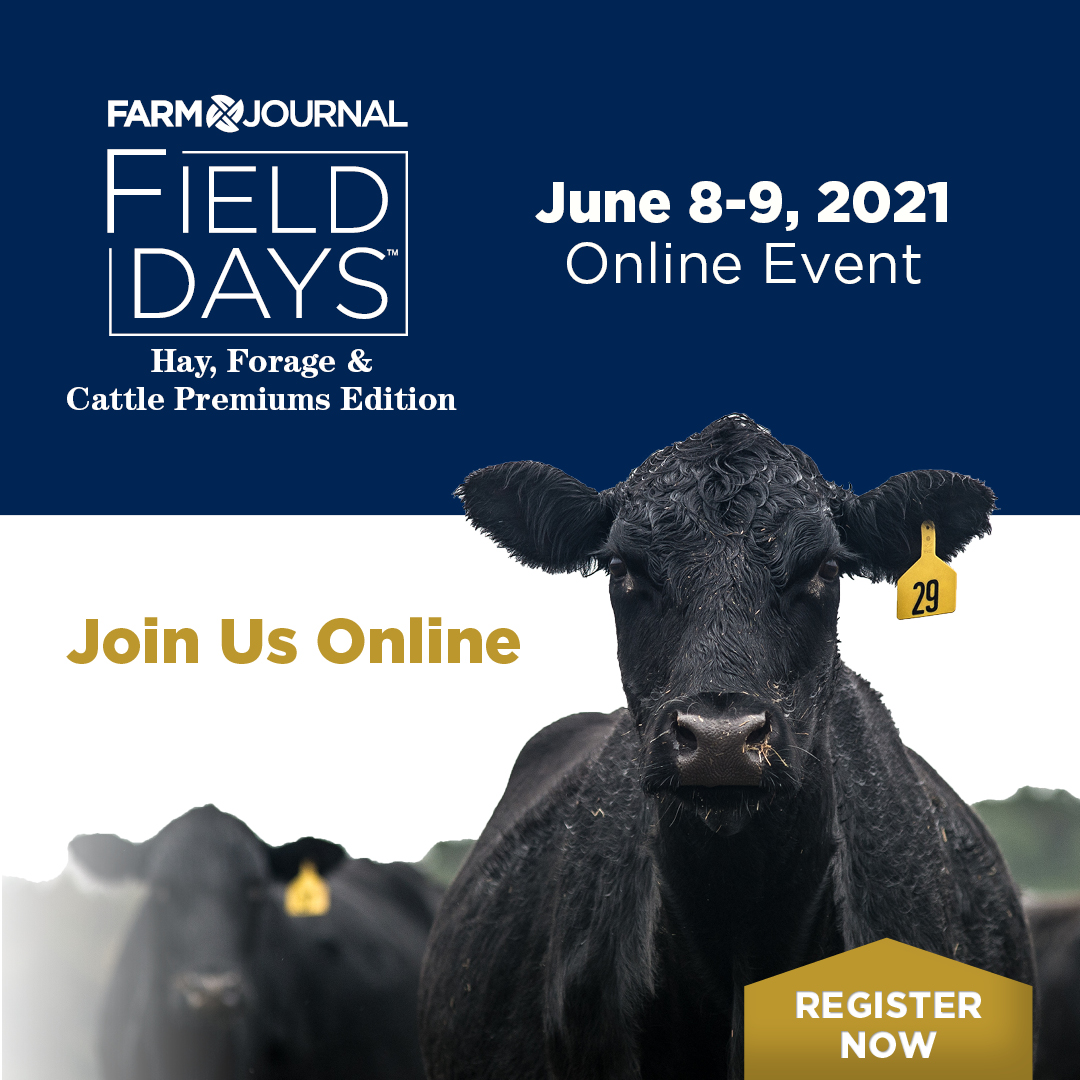As Feed Costs Skyrocket, Cattle Producers Faced with Double Dose of Bad News
USFR-FJR 5.15.21
Planting progress is in the books for some Iowa farmers. Amanda Adam says her family finished planting Mother’s Day weekend, a relief for a pork producer who needs all the feed she can get.
“Obviously, we have grain prices that are going up, too,” says Adam. “So, the margins are still different than they would be if grain prices were back in the $3 or $4 range.”
Climbing feed costs are creating a difficult situation for feed users. As the markets tries to figure out just how high feed costs will actually go, feed users are faced with the same dilemma.
“First of all your head is spinning,” says Bob Utterback of Utterback Marketing. “You have to basically say, ‘Okay, if I have been long, or I haven't been long at this point, what is my risk and my risk is the weather scare.”
As grain prices are already at historically high levels, a possible weather scare could produce an even scarier outlook for those needing to buy feed.
“You have to kind of be in catastrophic mode right now,” says Chip Nellinger of Blue Reef Agri-Marketing. “If we have a weather problem and a weather scare, the upside is very scary. We'll far exceed previous all-time highs and corn and beans. That's a biggie ‘if,' and if we have a weather scare.”
It’s not just corn that is creating price pain for feed buyers, but also soybeans.
“Frankly, I’m probably more concerned about the soybeans, so I’d be worried about my meal too,” adds Uttberback.
How High Will Feed Prices Go?
USDA’s May World Agricultural Supply and Demand Estimates (WASDE) added fuel to the tight soybean supplies story.
“Soybeans has a very bullish story to tell,” says Ben Brown, economist with the University of Missouri. “And, and certainly, I think that will continue to support prices. We've seen this being played out in the markets the last couple of weeks. It is tight, and soybeans are now fighting to retain the acres that they can't lose. And they're even fighting, and frankly losing, the battle of even maintaining the acres that they have. So they have work to do. And the market, especially end users, are going to continue to have to bid premiums to bring this product in.”
AgriTalk host Chip Flory says the other big takeaway from the report is the fact $7 corn hasn’t scared away demand yet.
“USDA added 100 million bushels to the corn export estimate and took it up to 2.775 billion bushels, and that's with old crop corn futures above $7,” says Flory. “We need to keep in mind that as we look forward into the 2021/2022 marketing year, that what has happened in the old crop marketing year tells us that the market needs to work harder to slow down demand.”
The Packer Capacity Problem
As certain sectors of demand show no signs of slowing, cattle feeders are faced with a double dose of bad news.
“One of the big ones right at the moment is that we simply have a very large supply of fed cattle and not enough packing capacity to process at all,” says Derrell Peel, livestock specialist with Oklahoma State University.
Peel says the lack of packing capacity is getting to a critical point.
“We've been aware for several years that packing capacity had gotten down to a point where it was kind of imbalanced with cattle numbers, and actually, now is a little bit shorter what we need,” Peel adds.
Even with Saturday kills, Peel says processing can’t keep up with all the market ready cattle.
“But there's just a backlog of fed cattle right now. And that's really weighing on these fed cattle markets,” says Peel.
The latest Sterling Profit Tracker shows packer margins hit $929 dollars per head, an increase of more than $260 per head in the past week.
During that same period, feedyard margins were barely in the green, at $87 dollars per head, as feed costs aren’t doing feedyard operators any favors.
“What we've got right now is these feeder cattle markets are caught between this sort of stagnant fed cattle market that's capped by capacity and these high feed prices. And so that's really weighing on the feeder cattle complex right now,” says Peel.
Cattle Industry Wants Change
The current price imbalance between the packer, the feedlot and the ranch was at the heart of a closed-door meeting among cattle industry representatives this week.
Six groups met in person, including NCBA, R-CALF, U.S. Cattlemen’s Association, American Farm Bureau, National Farmers Union and Livestock marketing Association.
The groups, typically at odds, telling U.S. Farm Report they were on the same page and in agreement about possible changes and solutions, with a joint statement released Monday outlining how the groups plan to fight for a better balance in prices.
The release stated the group "talked openly and candidly about a wide range of important issues facing our industry today, including but not limited to:
- Packer concentration,
- Price transparency and discovery,
- Packer oversight,
- Packers and Stockyards Act enforcement,
- Level of captive supply, and
- Packer capacity."
As the cattle industry searches for balance, it's another challenge impacting cattle producers across the U.S. That's as many producers are still trying to recover from the price pain created by the COVID-19 pandemic.








